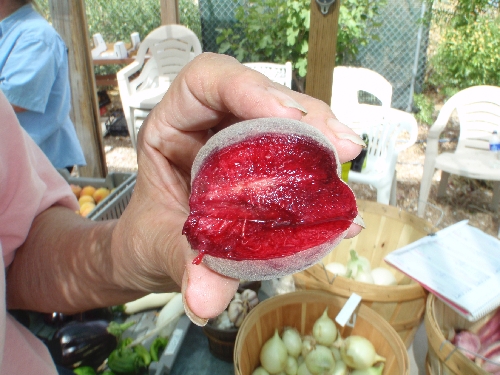Hedge’s formality determines how, when to prune
Q: Do you have a rough timeline of peach production for different varieties here in the Las Vegas Valley? I would like to go out to the orchard to try some of the different types you have out there so I can decide what I want to plant next spring. Also, will you or someone be organizing a bare-root order again this fall?
A: There is a great timeline for most fruit tree varieties that can be found on Dave Wilson Nursery website at http://www.davewilson.com/homegrown/promotion/chart.html.
We have matched our production dates at the University of Nevada Cooperative Extension Master Gardeners Orchard in North Las Vegas with those on this chart and they are usually within two to three weeks of these production dates. On this chart you will find varieties of peaches, apricots, plums and many other fruit trees and when they produce their fruit. Download it, it is a pdf file, and you can enlarge it to see it better.
As far as whether the orchard will be carrying bare-root fruit trees, it is best to contact the master gardener help line, 257-5555, and find out. If they are putting in an order for fruit trees, it will be in September so don't wait until December to order. It will be too late.
Q: Would you please comment on the proper method and timing to prune and hedge oleanders.
A: There are two types of hedges: formal and informal. You have to make up your mind which kind you want. Formal hedges are pruned with hedge shears around the outside of the plants while informal hedges are pruned with loppers or even a pruning saw near the soil level.
Formal hedges are supposed to be pruned so that the bottom is wider than the top but they are maintained in a tight, boxy shape. To maintain them properly, formal hedges need to be pruned two to three times during the growing season to keep the new growth restrained and maintain that boxy shape.
Informal hedges can be pruned every two to three years. Most of the pruning is done at or near the soil level and is done during the winter months.
Formal hedges are best done with nonflowering plants that have small leaves with slower growth rates. Informal hedges are best served by other types of plants, particularly those that flower during the summer. You can prune any plant used for hedging in any manner you want but there are some big advantages in picking the right type of hedge for the right plant.
Oleanders flower on new wood. In other words, after its winter rest period, its new growth supports flowering throughout the summer. Formal hedges, since they are pruned to maintain that boxy look, are pruned when they are actively growing. If they aren't pruned then, in a few short months they would no longer be in that boxy shape.
The problem you can see right away is that if picking a formal hedge for oleander you will prune off most of the wood that supports flowering so it will be pretty much a green hedge. If you want to enjoy the flowers, then convert it to an informal hedge.
Now if you really want to make a lot of work for yourself, then why not make all the plants in a landscape boxes. That way you would have to prune them several times a year rather than once every two to three years.
Q: Please tell me if this is the correct way to send you a question. Your blog is great. We are still trying to move out from New York. The house we own in Las Vegas has a good sized backyard. With tenants in the house until we can move, the weeds are not usually pulled. Although I hate to use pesticides, I think we need to.
When should we use pre-emergent and post-emergent pesticides for the greatest effect? We want to keep the weeds down, but don't want to poison the trees or shrubs (or the ground) any more than absolutely necessary.
A: Yes, you can reach me at Extremehort@aol.com, through my newsletter or blog at Xtremehorticulture of the Desert.
Pre-emergent herbicides are applied to the surface of the soil and watered in lightly. They kill germinating weed seeds by putting down a barrier poisonous to many different weeds that germinate from seeds.
The timing of this is usually in the spring, with applications scheduled about the first of February for many common weeds. The barrier must be in place and active when the seeds germinate. Once the barrier is put down, the soil should not be disturbed or you will disturb this barrier.
Post-emergent herbicides are applied to weeds when they are present. These are chemicals like Roundup, which is nonselective and will kill many different types of weeds. Roundup will kill or damage anything that is green and sprayed. Direct it onto the weeds, not plants you value.
Timing is critical and these weed killers work best when weeds are actively growing and not during times of stress like from heat or drought. There are several weed killers to pick from in nursery or garden stores. Read the label to find out how to use them best and any potential dangers.
One very effective method of weed control is mulch. Mulch can be a thick layer of chipped or shredded wood or even rock that covers the soil surface and helps prevent weed seeds from germinating. Post-emergent weed killers are then used to kill weeds that emerge from mulches.
Bob Morris is a horticulture expert living in Las Vegas; he is on special assignment in the Balkh Province, Afghanistan, for the University of California, Davis. Visit his blog at xtremehorticulture.blogspot.com.

















